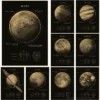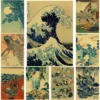The Effervescent Elixir’s Origin Story
Picture yourself savoring a refreshing sip of sparkling water, its crisp bubbles dancing on your tongue. This beloved beverage is now a staple in homes and restaurants worldwide. It owes its name to a small German town called Selters. The story of how this unassuming locale became synonymous with the fizzy drink we know today is a tale of natural springs, health-seeking patrons, and a linguistic twist of fate.
A Spa Town’s Claim to Fame
Nestled in the heart of Germany, Selters gained renown for its naturally carbonated mineral springs. As early as the 16th century, the town’s bubbling waters were touted for their healing properties by none other than Paracelsus. He was a renowned Latin medical authority of the time. Visitors from far and wide flocked to Selters to bathe in and drink from these effervescent fountains. They were seeking relief from digestive ailments and other chronic conditions.
The Seltzer Sensation Spreads
As word of Selters’ rejuvenating springs spread, so did the demand for its water. Soon, bottled water from Selters began making its way across Europe, carrying with it the town’s name. The German word “Selterswasser” evolved into the English term “seltzer.” This forever linked the sparkling beverage to its geographical origin.
Science Meets Serendipity
Selters’ springs were a natural phenomenon. However, it took the curiosity and ingenuity of 18th-century scientists to unlock the secrets of carbonation. British chemists Joseph Priestley and Jacob Schweppe experimented with fermentation gases and acid-base reactions. He ultimately discovered how to replicate the bubbling effect of Selters’ springs in a controlled setting.
This serendipitous blend of science and entrepreneurship paved the way for the commercialization of “manufactured water.” This made the once-exclusive Selters experience accessible to the masses. As production techniques improved and equipment became more affordable, seltzer water transitioned from a luxury item to a household staple.
A Sensory Symphony
So, what is it about seltzer water that keeps us coming back for more? Research suggests that the appeal goes beyond mere refreshment. The prickly sensation of carbonation on our tongues stimulates pain receptors in a manner similar to spicy foods, adding an intriguing dimension to the drinking experience.
This subtle dance between pleasure and irritation mirrors the very nature of human attraction, drawing us in like the mesmerizing ascent of bubbles in a glass. Just as we seek excitement in our relationships, we find ourselves drawn to the lively, almost magical quality of seltzer water.
A Metaphor for Life
In many ways, the effervescence of seltzer water serves as a metaphor for the ever-changing nature of life itself. Each sip brings a fresh cascade of bubbles, reminding us of the fleeting beauty found in even the smallest moments. As the bubbles burst and dissipate, we are reminded of the transient nature of all things, from the molecular level to the global scale.
From Springs to Shelves
Today, the legacy of Selters lives on in every can and bottle of seltzer water consumed around the world. What began as a local phenomenon in a German spa town has evolved into a global beverage industry, fueled by a combination of natural wonder, scientific innovation, and an enduring human fascination with the sublime.
The next time you find yourself reaching for a cold, crisp seltzer water, take a moment to reflect on the remarkable journey that brought this effervescent elixir from the springs of Selters to your lips. It is a story that spans centuries and continents, reminding us of the unexpected ways in which nature, science, and human curiosity intersect to shape the simple pleasures we enjoy every day.



